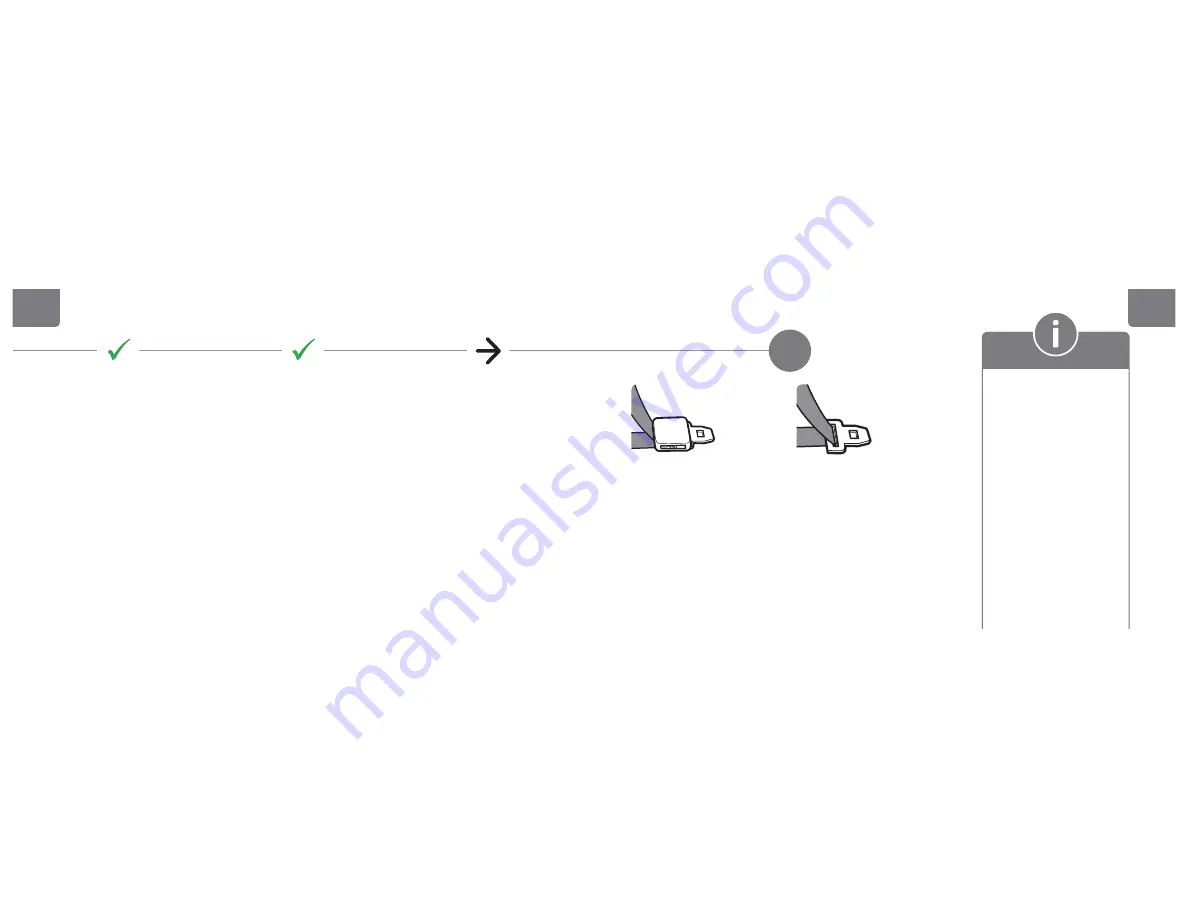
57
58
Types of Retractors
Automatic Locking Retractor
This retractor always locks.
It will automatically lock after slowly
pulling the seat belt out at least halfway
and letting the belt go back into the
retractor
1-2 in.
(2.5-5 cm).
Emergency Locking Retractor
See Step 4
“Check Latch Plates”
If the retractor does not lock, it is most
likely an Emergency Locking Retractor.
These retractors only lock during a
sudden stop or collision.
You will need to determine if your seat
belt’s latch plate can lock the belt. See
step 4, “Check the Latch Plates”.
Switchable Retractor
(most vehicles have this type)
This retractor can be switched to a
locking mode.
You
MUST have the retractor in the
locking mode
to use the seat belt with
this car seat.
Switching to locking mode
: Slowly pull
the shoulder belt all the way out, then let
it go back in
1-2 in.
(2.5-5 cm).
As it goes back in, you will most likely
hear a ratcheting sound.
Gently pull the belt to see if it has
locked. You will not be able to pull any
more belt out if the lock has engaged.
Latch plates are the part of the seat belt
that goes into the buckle.
To see if the latch plate locks
:
1.
Buckle Vehicle Belt
2.
Firmly Tug Lap Portion of Seat Belt
While Pulling It Up
If the vehicle belt does not slide through
the latch plate, it’s locked.
If the latch plate slides up and down the
vehicle belt, it is a
sliding latch plate
.
Sliding latch plates easily slip between
the lap and shoulder portions of the
belt.
4
Check Latch Plates
Locking
Latch Plate
Emergency
Locking
Retractor with
a Sliding Latch
Plate
If you have an Emergency
Locking Retractor with a
Sliding Latch Plate, you
MUST use a locking clip.
Please contact us for one,
see the back cover of the
manual.
Never Use the
Following With
This Car Seat:
• Emergency Locking
Retractor Lap Only Belt
• Infl atable Seat Belts





































